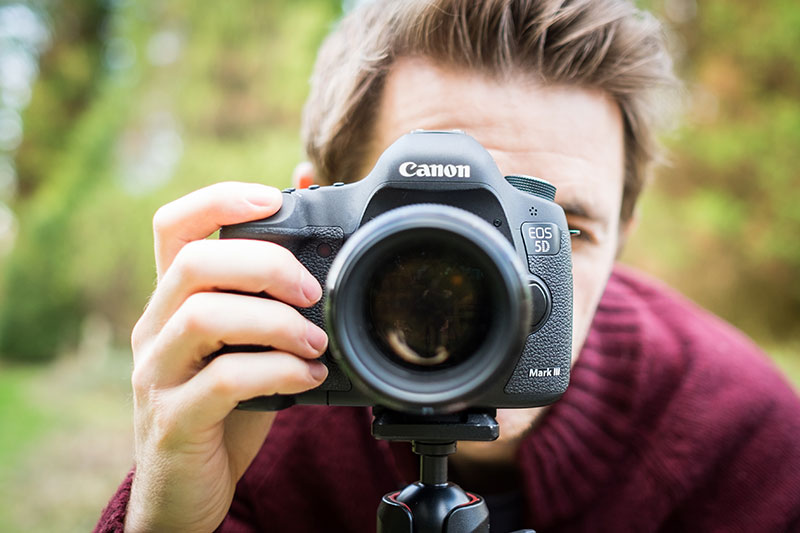What to Consider when buying a second hand camera
As a consumer, it’s your responsibility to check and confirm that you are buying a product that meets or exceeds your expectations. You need to consider the price. Is the price too low for the item? If it’s unreasonably low, there may be something amiss. If a deal looks too good, it typically is. This is especially true if you are buying it sight unseen like most online purchases.
Here are some of the top things you need to check for when you are buying second-hand or surplus equipment:
1. The Camera Body
The first thing you want to check for is the body of the camera. You want to consider the condition of the camera body. Is it dented? Is it scuffed? If there is a lot of physical damage to the body, you can bet that the camera was dropped and mishandled. This is a major red flag. You also want to unscrew the cap to check for the lens area. You’ll want to look at the mirror and focus screen too. Try to see if there is any residual oil there.
You want to look closely at all of the screens and other sensitive areas of the camera. You don’t want to find any signs of oil because it could dictate that the internals of the camera are faulty. Try to position the camera facing downwards and use a flashlight to look inside.
2. Shutter Count
The shutter on a camera can be compared to a car’s mileage. You want to check to see how many times the shutter has been used. This can tell you how often the camera was used. It’s always best to avoid buying a camera that has a high shutter count especially if it’s consumer-grade equipment. Cameras that are meant for consumers aren’t meant to last nearly as long as professional-grade equipment.
3. Sensors
You want to check the sensors too. You can take a test shot with the camera between f16 and f22. Try to shoot at the sky. You’ll want to zoom out and zoom in to check if there are any noticeable blemishes that you can see. You can check for anything from lines to scratches to see if the sensor has been damaged.
4. Lenses
It’s not necessarily a dealbreaker if the lenses show signs of scuffing or wear on the outer shell. However, you want to ensure the lenses continue to fit tightly. You also want them to turn smoothly. It’s a good idea to check for any internal fogging as it can tell you if there are smears inside and you also want to ensure there is no dust trapped inside. You can connect the lenses directly to the camera body and test them out. You want the autofocus to lock on quickly. If it takes a long time, there could be something wrong.
5. Aperture Blades
You want to check the aperture blades. You can do this by pushing the lever that’s at the rear end of the lenses. Some lenses do not have these. However, if they do, you’ll want it to operate smoothly.
6. Focus Sharpness
It’s always a good idea to check for the sharpness of the photos it takes. You can use a test chart to do this easily. You’ll want to place the chart directly on a wall and place the camera on a still surface like a tripod. From there, you can take some shots using a remote or self-timer. Once you have the shots, zoom in and see if it focuses properly.
7. Mold
You want to avoid buying any equipment that has been overly used in humid environments. Humidity can be a real problem for camera equipment. The lenses likely have mold and fungus if they have been exposed to them for too long. Look for web-like patterns on the lenses to check for this.
8. Second-Hand Accessories
You are going to want to check to see if the camera comes with all of the much-needed accessories that you will be using. This includes all of the charging cables, lens caps, and more. It’s always a good idea to find cameras that come with even more after-market or officially branded accessories. However, it’s not necessary. It can save you money, however.
You’ll want to ensure all of the accessories are compatible. You want the flashes and everything to work with the intended model.
9. How To Test The Equipment
It’s always a good idea to start taking as many shots as you can in different lighting conditions and more. You want to take over 100 shots. Try to shoot some macro shots, some medium-range, and some long-range shots. See if everything comes out to your liking.
10. Refurbished Lenses
It’s always possible to score some great deals on refurbished lenses. Buying any camera equipment second-hand can save you a lot of money. However, you do need to know what to look out for and what to avoid. Use the tips in this article to save plenty of money that you can use to get great photography equipment at massive savings.
Many people read our art newsletter ; you should too!



